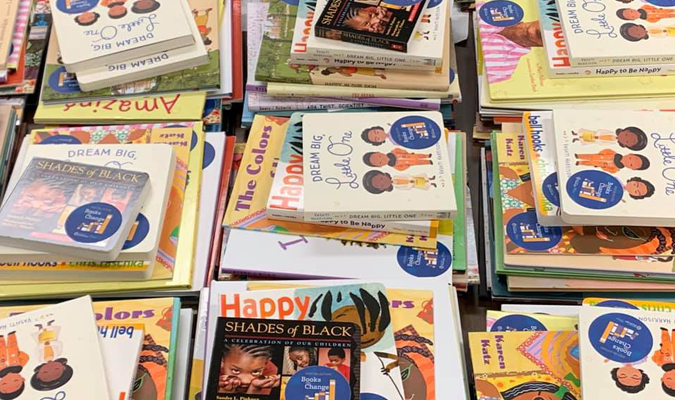We recommend these 5 Action Steps when Choosing Books:
1. Start By Reviewing Your Library
- Who is represented in my library? Consider the characters in the book itself, and the author/illustrator, too!
- Is this a GOOD BOOK? Do I enjoy reading it? Will kids enjoy reading it? Whose story is centered and how? Is it a joyful story?
- What is my purpose in owning/reading this book? Is it to teach myself or kids something? Does it focus on a certain topic or skill? Is this something my audience needs/wants to know?
- Where are the gaps? Once you’ve reviewed your library, consider whose voice is not present and why.
2. Always Pre-Read Books
- What is my first reaction when reading this book? Is it joy? sadness? anger? confusion? Why?
- Who is represented and how? If and how are characters from non-dominant identities portrayed in the illustrations and plot? Are they the hero or the villain? Are they tokenized or central? Do I see their full selves – their talents, strengths, and joy?
- Is it a book that moves toward change? Does the story empower the characters and/or the reader? Is it actionable? Do readers connect to the story? Does it encourage them to act against injustice?
3. Consider What You Know…and What You Do Not Know.
- Don’t ignore your gut. If you have a reaction to a book, spend time with those feelings to understand why. A gut reaction doesn’t mean it’s a bad book, but it could mean you need to do some additional thinking, learning, and planning before you’re ready to read with kids
- Who is the story for? Are you reading to students? Your own children? What do they already know about the topic? What do they need to know? How old are they? Would this change if and how you read the story?
- What is the purpose of the story? Who’s lived experiences does the book reflect, even if it is fictional? How do those experiences align with your own? Is it a topic you feel prepared to talk about with children?
4. Look Across Your Collection
- Joy Ratio - For every 1 book about oppression, there should be 19 about JOY! (pop out!)
- How does this book fit into your collection?
- Are all your history narratives rooted in oppression?
- Are different identities represented across lived experiences?
- Do all your books featuring characters from nondominant identities tell the same story or do they vary?
5. Do your work!
- Always pre-read the book and see what comes up for you.
- Talk with other adults about hard topics before you talk to children.
- Consider the range of questions children might ask and practice answering them.
- Are there places you want to learn more? Emotions to explore? Ideas to unpack? Do your work first.
Learn More
Learn more about how to use picture books for change.
Our Literacy and Learning Division has developed a measure for coding picture books, based on the NYU Culturally Responsive Curriculum Scorecard (link) and the items above, to help us identify Books For Change. For more information, or to learn more about how you can hire us/consult with us on auditing your own collection of books, contact Literacy and Learning Director Caitlin Forbes Spear at cfs15@pitt.edu

